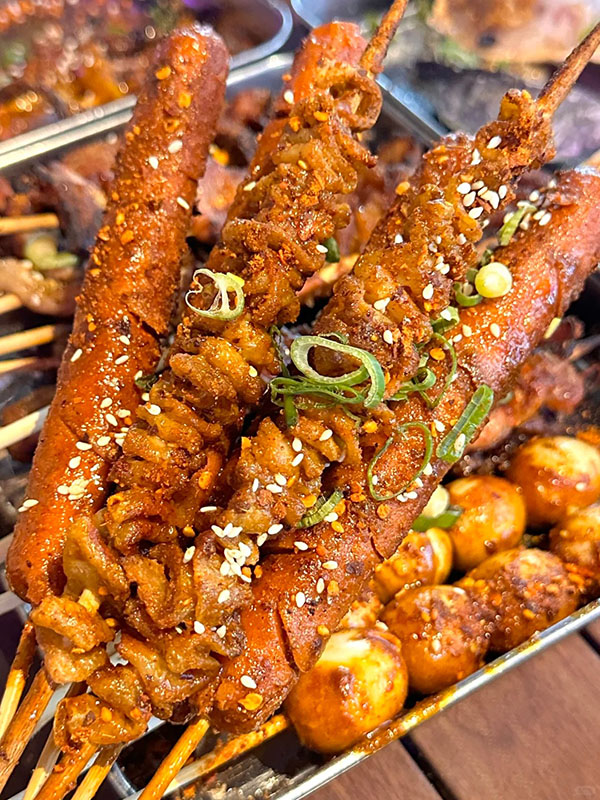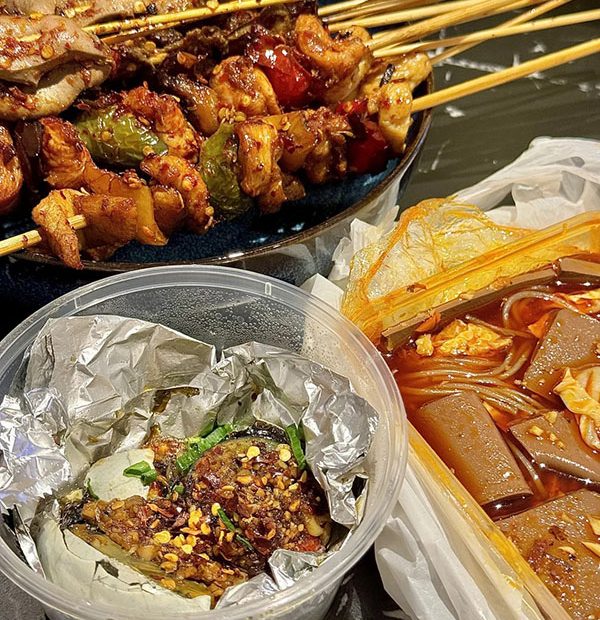After arriving in Melbourne, I was quickly drawn to the city’s vibrant outdoor lifestyle, especially the public barbecue facilities, which I couldn’t wait to try. At first, I thought barbecuing was a simple matter, but after observing it more closely, I realised there was a lot to it.
Here, I’ll share the experiences and lessons I’ve learned while exploring Melbourne’s public barbecue culture.
Rules for using barbecue facilities
Soon after arriving in Melbourne, I encountered a total fire ban in Victoria. I was excited to prepare for a barbecue party with my new friends. I had already bought the ingredients and made plans, but the announcement of the fire ban caught me off guard.
I hurriedly asked around to see if I could use a gas barbecue. After some research, I finally understood: on total fire ban days, the use of solid fuel barbecues (wood, charcoal or briquettes), including enclosed ovens or kettle-type devices, is prohibited.
However, portable gas and electric barbecues are allowed if they are used within 20 metres of a permanent residence (not a mobile home, caravan or tent). This was a great relief to me and the first time I really appreciated the importance of public barbecue regulations.
Park-specific requirements
Out of curiosity about the different park barbecue regulations, I went with a friend to Prospect Park for a weekend barbecue. As soon as we arrived, I asked a park ranger, ‘Are barbecues allowed here?’ He kindly explained that barbecues were only allowed in designated areas marked on the park map, and that they were not allowed anywhere else.

When I asked about the barbecue requirements, he said that only charcoal barbecues or fire pits at least two feet off the ground were allowed, and that propane was prohibited. We found a spot according to the map and had a wonderful barbecue party.
I couldn’t wait to pack my gear after hearing that High Park was beautiful and perfect for picnics and barbecues. But at the entrance, a park ranger stopped me – it turned out that there were no barbecue facilities in the park and bringing your own barbecue equipment was not allowed. This experience made me realise that the rules vary greatly from park to park, so be sure to check before you go.
Tips for timing and preparation
Choose the right time
Choosing the best time to barbecue can also be a challenge. Once, I asked everyone’s opinion when organising a party. Some people prefer the late afternoon (4-5pm), as it’s more lively with energetic children and parents. Others suggest starting later, when it’s quieter without children and the temperature is lower in the evening. A few even suggested 2pm as an ideal middle ground. As for the weather, many people think 22°C is perfect, with a barbecue lasting 4 hours, especially in a garden with a beautiful view. In the end, I realised that the time depends on the crowd and personal preferences.
Using and operating a charcoal barbecue
I like the smoky smell of a charcoal barbecue. However, after a barbecue in the park, I didn’t know what to do with the charcoal. Fortunately, a kind passer-by taught me: after cooking, close the barbecue’s vents and let the embers cool for at least 48 hours. Then, while stirring, slowly pour water over the ashes to ensure they are completely extinguished and will not re-ignite.
Keep the following tips in mind when using a charcoal barbecue in the park:
- Choose a safe location: The barbecue should be placed away from playgrounds, dry leaves, buildings or picnic areas, and on a non-flammable surface. Once, I almost placed the barbecue near the leaves, but fortunately my friend reminded me in time.
- Safe fire: Use the right ignition tool (paper or solid ignition agent), and never use lighter fluid, which can cause a fire. Arrange the coals neatly. I once used lighter fluid and almost burned myself – never again!
Choosing ingredients and tools
Choosing the right cooking oil
Choosing the right barbecue oil requires some research. The supermarket staff once recommended oils with a high smoke point: vegetable oil, rapeseed oil, grape seed oil, rice bran oil or pomace oil. But then I discovered that olive oil – whether it is regular, virgin or extra virgin – is also popular for its monounsaturated fats, antioxidants and mild flavour (smoke point: 390–468°F), and can be used for a wide range of dishes.
Keeping communal barbecues clean and safe
Initially, I was sceptical about the hygiene of public grills. At a barbecue, an experienced user noticed my hesitation and reassured me that the high temperatures would burn off any residue, and that I could use a barbecue brush to deal with the rest. He also suggested oiling the grill before and after cooking for better results. For a cold grill, cover the surface with oiled (but not soaked) paper towels. Following his advice, my food turned out delicious.
Other barbecue tips
I plan to barbecue at home during the burning season. A friend warned me that recreational fires (including charcoal barbecues and wood-burning devices such as wood stoves) are prohibited under air quality restrictions. A quick search confirmed this – another important rule to bear in mind.
Beach barbecue tips
I’ve always wanted to have a barbecue on the beach. Once, I saw someone using a portable gas barbecue and went up to ask them about it. They explained that, although portable gas barbecues can usually be used on beaches and in parks, they must be supervised at all times and should not be placed directly on the ground, but on a table, stand or trolley.
Reusing charcoal and more
After a barbecue, I asked my friends if the leftover charcoal could be reused. They explained that although reused charcoal burns at a lower temperature, high-quality charcoal can be used at least twice for barbecuing. As an alternative, oak can be used to add a smoky flavour, and adjusting the damper on the barbecue can control the fire.
